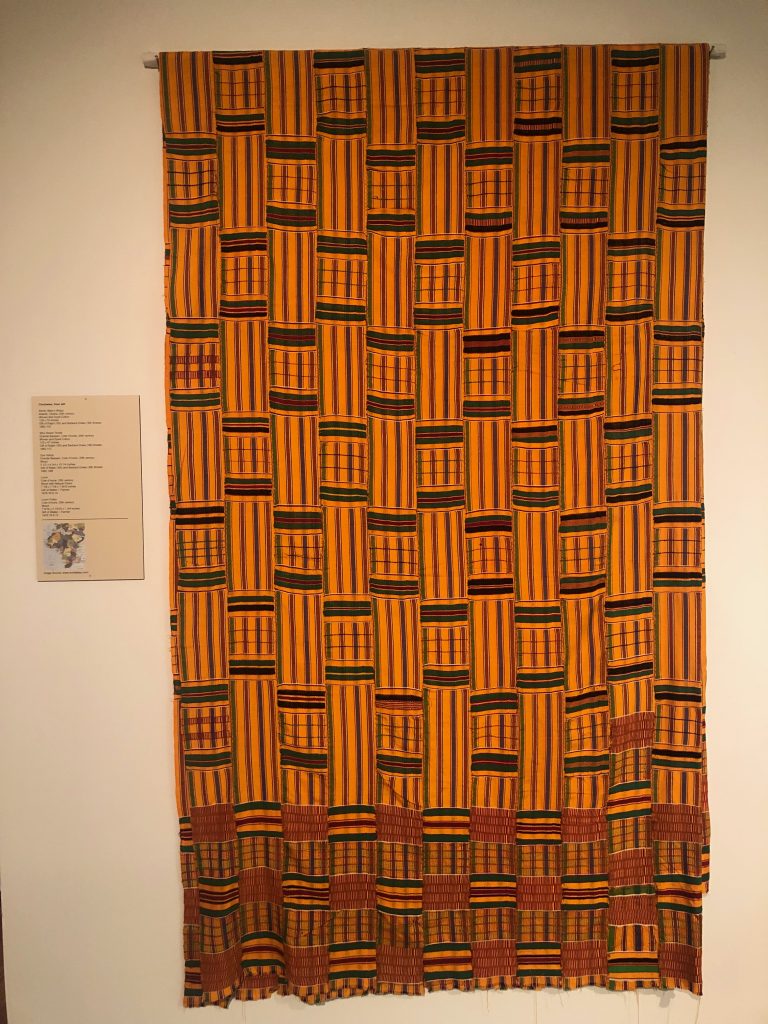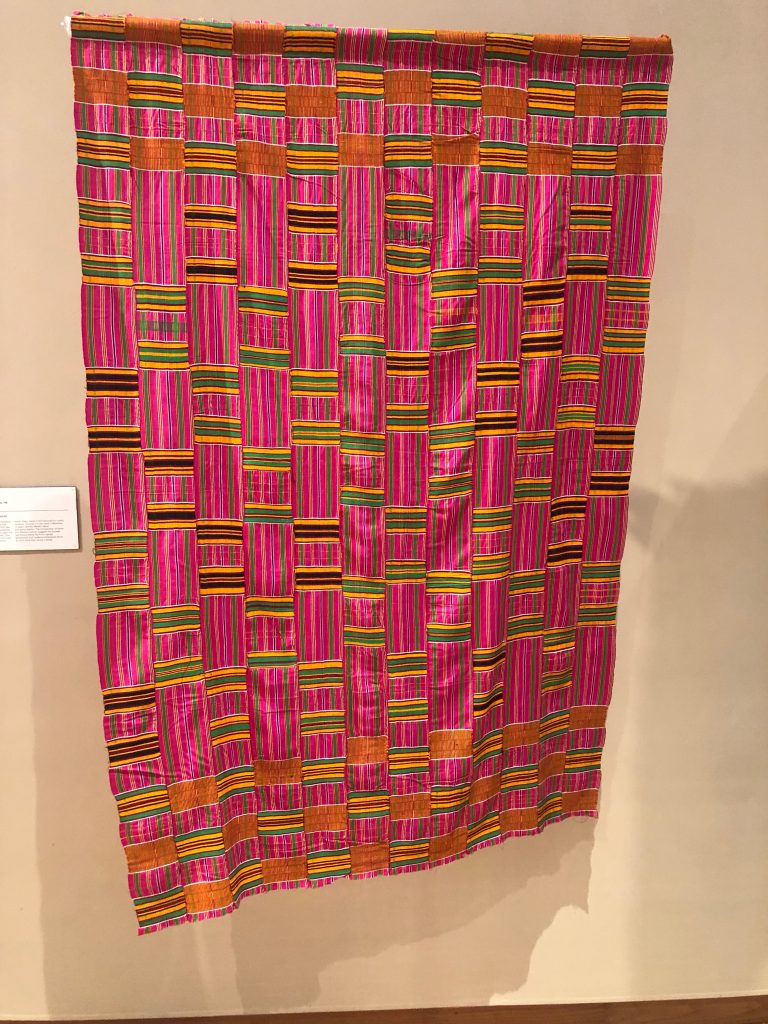
 Kente cloth is somewhat taking over the museum this spring, and we are HERE FOR IT. MUAM has three different kente cloths on display this semester in More Than An Object, 40 at 40, and Global Perspectives. Traditionally, men of the Asante and other Akan cultures created Kente cloth by stitching together individual strips of woven textile to produced the final garment. Kente cloth was originally created only for the Asantehene, or king, as part of his royal regalia to assert his wealth and power over the community. Over time, global trade has thrusted Kente into a sort of universal symbol of Africa around the World.
Kente cloth is somewhat taking over the museum this spring, and we are HERE FOR IT. MUAM has three different kente cloths on display this semester in More Than An Object, 40 at 40, and Global Perspectives. Traditionally, men of the Asante and other Akan cultures created Kente cloth by stitching together individual strips of woven textile to produced the final garment. Kente cloth was originally created only for the Asantehene, or king, as part of his royal regalia to assert his wealth and power over the community. Over time, global trade has thrusted Kente into a sort of universal symbol of Africa around the World.
Today, Kente is still fashioned for royalty contexts; however it is also used in diplomacy, to assert identity, Western decor, and global fashion. The incorporation of Kente into Western cultures suggests the broader significance Kente has from a global perspective; such evidence emphasizes Kente as much more than merely a textile.
 Each color and pattern is symbolic of specific meaning or proverb to the Asante peoples. Looking at the pink kente located in More Than An Object, the pink symbolizes that it was probably made for a woman to wear. Looking specifically at the white and gold lines, this most likely refers to fertility, meaning that this specific cloth was made to enhance the chances for women to have many healthy pregnancies and babies. In Global Perspectives, the large, orange kente is one of the most prominent patterns and colors produced by the Asante. Orange, meaning royalty and wealth, was the original color of kente when produced solely for the king. Here, the golden orange color is symbolic of the rising sun and metal, instating powerful spirituality and wealth among the community. In 40 at 40, another large, hanging kente is found with similar colors to that in Global Perspectives, but a very different pattern. This pattern refers to the experience and talent the weaver has in his ability to create diverse and detailed patterns.
Each color and pattern is symbolic of specific meaning or proverb to the Asante peoples. Looking at the pink kente located in More Than An Object, the pink symbolizes that it was probably made for a woman to wear. Looking specifically at the white and gold lines, this most likely refers to fertility, meaning that this specific cloth was made to enhance the chances for women to have many healthy pregnancies and babies. In Global Perspectives, the large, orange kente is one of the most prominent patterns and colors produced by the Asante. Orange, meaning royalty and wealth, was the original color of kente when produced solely for the king. Here, the golden orange color is symbolic of the rising sun and metal, instating powerful spirituality and wealth among the community. In 40 at 40, another large, hanging kente is found with similar colors to that in Global Perspectives, but a very different pattern. This pattern refers to the experience and talent the weaver has in his ability to create diverse and detailed patterns.
Written by: Caroline Bastian
